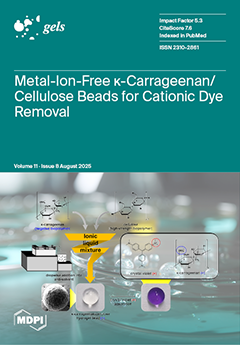Equisetum telmateia Ehrh. (great horsetail) belongs to the Equisetaceae family and its aerial parts have been traditionally used for skin conditions and to achieve healthy and resilient skin, nails, and hair. This study aimed to evaluate the inhibition of skin-related enzymes by, the
[...] Read more.
Equisetum telmateia Ehrh. (great horsetail) belongs to the Equisetaceae family and its aerial parts have been traditionally used for skin conditions and to achieve healthy and resilient skin, nails, and hair. This study aimed to evaluate the inhibition of skin-related enzymes by, the antioxidant capacity of, and the phytochemical composition of
E. telmateia. Additionally, a novel emulgel was formulated from the main methanolic extract and characterized in terms of pH, viscosity, determination of content quantification, textural profile analysis, and spreadability. After the characterization studies, in vitro release and ex vivo permeation and penetration studies were performed. Firstly, the dried aerial parts of
E. telmateia were macerated in methanol, followed by partitioning with solvents of increasing polarity:
n-hexane, chloroform, ethyl acetate, and
n-butanol. Antioxidant activity was assessed using DPPH, FRAP, CUPRAC, and TOAC assays, while enzyme inhibition was analyzed for collagenase, elastase, hyaluronidase, and tyrosinase. LC-MS/MS analysis identified 53 phytochemical compounds. Protocatechuic acid, the main phenolic compound, was quantitatively analyzed in each subfraction by HPTLC. The in vitro release studies showed sustained release of the reference substance (protocatechuic acid) and the kinetic modeling of the release was fitted to the Higuchi model. The ex vivo permeation and penetration studies showed that the formulation exhibited a retention of 3.06 ± 0.21 µg.cm
−2 after 24 h, whereas the suspended extract demonstrated a skin retention of 1.28 ± 0.47 µg.cm
−2. Both the extracts and the formulated emulgel exhibited inhibitory effects on skin-related enzymes. Our finding suggested that
E. telmateia might be a valuable ingredient for wrinkle care and skin-regenerating cosmetics.
Full article






